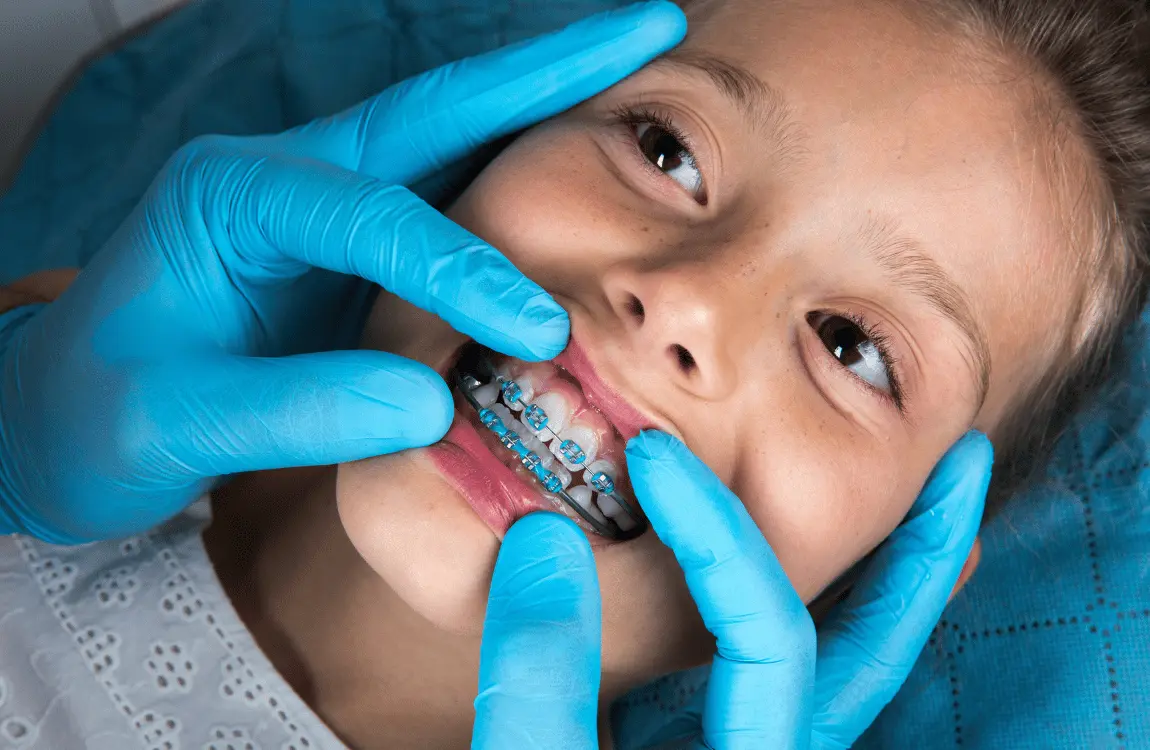Your Overview to Cumming Invisalign: Straightening Teeth with Style and Convenience
A Closer Appearance at Various Orthodontics Procedures and Their Benefits in Dental Treatment
Orthodontic procedures play an essential role in improving dental health and wellness and enhancing the general aesthetic appeals of one's smile. From standard dental braces to contemporary clear aligners, the field of orthodontics supplies an array of treatment choices tailored to satisfy specific demands.

Traditional Braces: Alignment Correction Approach
Using the tried and true approach of conventional braces, orthodontic specialists successfully right misalignments of the teeth and jaw to restore ideal dental health and wellness and function. Traditional dental braces consist of steel brackets that are stuck to the teeth and connected by wires and elastic band. This system uses gentle stress to progressively move the teeth right into their correct settings in time.
Among the key advantages of traditional braces is their flexibility in dealing with different oral concerns, including jampacked teeth, spaces, crossbites, underbites, and overbites. By dealing with these imbalances, braces not only improve the visual appearance of the smile but also improve overall oral health and wellness. Correctly lined up teeth are easier to clean up, decreasing the threat of tooth cavities, periodontal illness, and various other oral problems.
While modern-day orthodontic advancements use options like clear aligners, standard braces continue to be a affordable and reliable solution for intricate placement concerns. Orthodontists very carefully personalize treatment strategies to suit each individual's unique demands, making certain efficient and effective end results in achieving a straighter, much healthier smile.
Invisalign: Clear Aligners for Discreet Therapy
While traditional dental braces have long been a go-to method for remedying dental imbalances, Invisalign clear aligners use a discreet alternative for accomplishing straighter teeth and a healthier smile. Invisalign aligners are virtually unseen, making them a preferred choice for individuals who prefer a more aesthetically pleasing orthodontic treatment option.
These clear aligners are custom-made to fit snugly over the teeth, progressively moving them into the preferred setting. The therapy process includes wearing a collection of aligners that are altered approximately every 2 weeks to stay up to date with the tooth motion.

In addition, Invisalign aligners usually need fewer sees to the orthodontist for adjustments, providing a much more convenient therapy alternative for those with active routines. Generally, Invisalign clear aligners provide a discreet, comfortable, and reliable method to attain a straighter smile.
Lingual Braces: Hidden Behind the Teeth
Linguistic dental braces, positioned discreetly behind the teeth, supply an alternate orthodontic treatment method for individuals seeking a much less noticeable method to remedy oral imbalances. aligners. Unlike conventional braces that are positioned on the front of the teeth, linguistic dental braces are tailored to fit the back surface areas of the teeth, making them practically unnoticeable to others. This element makes lingual dental braces particularly interesting people that may feel uneasy about using visible dental braces yet still desire to accomplish a straighter smile
One of the primary advantages of linguistic braces is their surprise nature, enabling people to undertake orthodontic treatment without attracting attention to their dental realignment process. While they might take some time to get utilized to due to their positioning, lingual dental braces can properly correct teeth and boost overall dental health results.
Ceramic Dental Braces: Visual Solution for Alignment
These braces are crafted from clear or tooth-colored materials, making them much less obvious contrasted to traditional steel dental braces. By mixing in with the all-natural color of your teeth, ceramic dental braces provide an extra refined orthodontic treatment option.
In addition to their cosmetic advantages, ceramic braces function similarly to metal dental braces in lining up the teeth and dealing with problems such as overcrowding, gaps, and imbalance. While ceramic braces are extra vulnerable than metal braces and may require somewhat longer therapy times, numerous clients locate the trade-off worthwhile for the enhanced look throughout the orthodontic procedure.
Retainers: Upkeep of Treatment Results
When dental braces are removed, the teeth have a tendency to change back to their original position. Retainers play a critical role in stopping this relapse by holding the teeth in their new placement.

Routine follow-up appointments with the orthodontist are required to ensure the retainers fit effectively and are effectively maintaining the outcomes of the orthodontic treatment. By faithfully wearing retainers as suggested, patients can appreciate a long lasting, lovely smile and stay clear of the demand for more comprehensive orthodontic work.
Conclusion
General, different orthodontic procedures supply effective solutions for placement correction and upkeep in oral care. Traditional dental braces provide a reputable technique for remedying imbalances, while Invisalign offers a very discreet alternative with clear aligners. Lingual dental braces are hidden behind the teeth for a much more inconspicuous treatment, and ceramic dental braces provide an aesthetic alternative for positioning adjustment. Retainers play a vital function in preserving the outcomes of orthodontic treatment. Each procedure has its very own advantages, dealing with various patient demands.
Unlike standard dental braces that are put on the front of the teeth, lingual braces are tailored to fit the back surfaces of the teeth, making them almost unnoticeable to others. These dental braces are crafted from clear Read Full Report or tooth-colored products, making them much less conspicuous contrasted to traditional metal braces.In addition to their aesthetic advantages, ceramic dental braces function likewise to steel dental braces in aligning the teeth and fixing concerns such as congestion, voids, and imbalance. While ceramic braces are more vulnerable than metal braces and might call for a little longer therapy times, many clients discover the compromise rewarding for the improved appearance during the orthodontic process. Lingual braces are hidden behind the teeth for a much more unnoticeable therapy, and ceramic dental braces supply a visual alternative for placement correction.